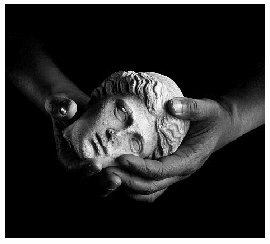|
FYI In the proper nomenclature, hypnosis
refers to the trance state itself, and hypnotism refers to the act
of inducing this state and to the study of this state. A hypnotist
is someone who induces the state of hypnosis, and a hypnotherapist
is a person who induces hypnosis to treat physical or mental illnesses.
|
Insight Alternative Methods
Hypnotherapy and Counseling What Is Hypnosis & How Does It Work ?
This popular representation bears little resemblance to actual hypnotism, of course. In fact, modern understanding of hypnosis contradicts this conception on several key points. Subjects in a hypnotic trance are not slaves to their "masters" -- they have absolute free will. And they're not really in a semi-sleep state -- they're actually hyperattentive. Our understanding of hypnosis has advanced a great deal in the past century, but the phenomenon is still a mystery of sorts. In this article, we'll look at some popular theories of hypnosis and explore the various ways hypnotists put their art to work. What is Hypnosis? In the everyday trance of a daydream or movie, an imaginary world seems somewhat real to you, in the sense that it fully engages your emotions. Imaginary events can cause real fear, sadness or happiness, and you may even jolt in your seat if you are surprised by something (a monster leaping from the shadows, for example). Some researchers categorize all such trances as forms of self-hypnosis. Milton Erickson, the premier hypnotism expert of the 20th century, contended that people hypnotize themselves on a daily basis. But most psychiatrists focus on the trance state brought on by intentional relaxation and focusing exercises. This deep hypnosis is often compared to the relaxed mental state between wakefulness and sleep. Early Hypnohistory In conventional hypnosis, you approach the suggestions of the hypnotist, or your own ideas, as if they were reality. If the hypnotist suggests that your tongue has swollen up to twice its size, you'll feel a sensation in your mouth and you may have trouble talking. If the hypnotist suggests that you are drinking a chocolate milkshake, you'll taste the milkshake and feel it cooling your mouth and throat. If the hypnotist suggests that you are afraid, you may feel panicky or start to sweat. But the entire time, you are aware that it's all imaginary. Essentially, you're "playing pretend" on an intense level, as kids do. In this special mental state, people feel uninhibited and relaxed. Presumably, this is because they tune out the worries and doubts that normally keep their actions in check. You might experience the same feeling while watching a movie: As you get engrossed in the plot, worries about your job, family, etc. fade away, until all you're thinking about is what's up on the screen. In this state, you are also highly suggestible. That is, when the hypnotist tells you do something, you'll probably embrace the idea completely. This is what makes stage hypnotist shows so entertaining. Normally reserved, sensible adults are suddenly walking around the stage clucking like chickens or singing at the top of their lungs. Fear of embarrassment seems to fly out the window. The subject's sense of safety and morality remain entrenched throughout the experience, however. A hypnotist can't get you to do anything you don't want to do. But what is it that makes this happen? In the next section, we'll look at the most widely accepted theory of what's going when you become hypnotized. What Lies Beneath What's in a Name? Your subconscious also takes care of all the stuff you do automatically. You don't actively work through the steps of breathing minute to minute -- your subconscious mind does that. You don't think through every little thing you do while driving a car -- a lot of the small stuff is thought out in your subconscious mind. Your subconscious also processes the physical information your body receives. In short, your subconscious mind is the real brains behind the operation -- it does most of your thinking, and it decides a lot of what you do. When you're awake, your conscious mind works to evaluate a lot of these thoughts, make decisions and put certain ideas into action. It also processes new information and relays it to the subconscious mind. But when you're asleep, the conscious mind gets out of the way, and your subconscious has free reign. Psychiatrists theorize that the deep relaxation and focusing exercises of hypnotism work to calm and subdue the conscious mind so that it takes a less active role in your thinking process. In this state, you're still aware of what's going on, but your conscious mind takes a back seat to your subconscious mind. Effectively, this allows you and the hypnotist to work directly with the subconscious. It's as if the hypnotism process pops open a control panel inside your brain.
|
| |
|






